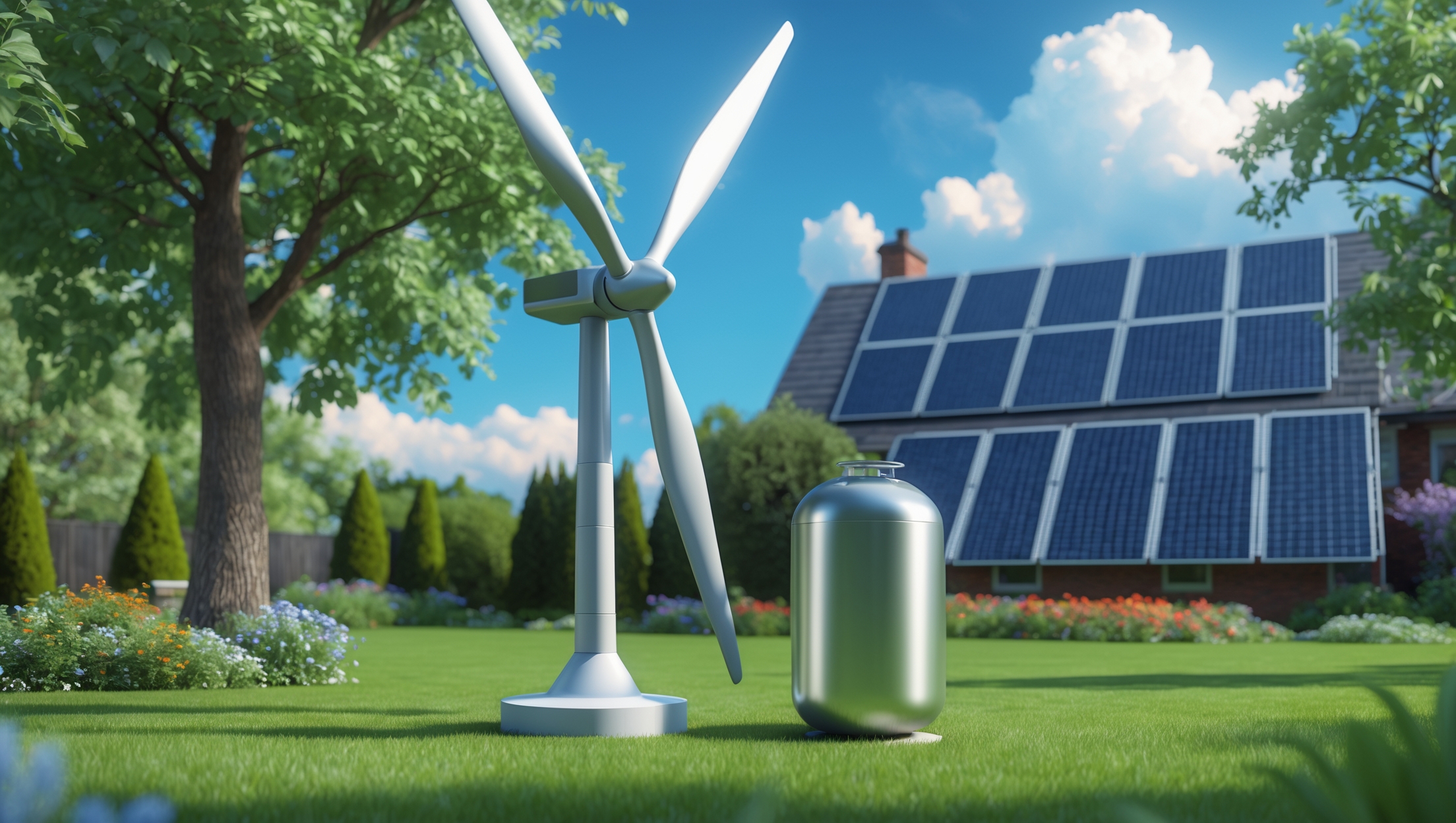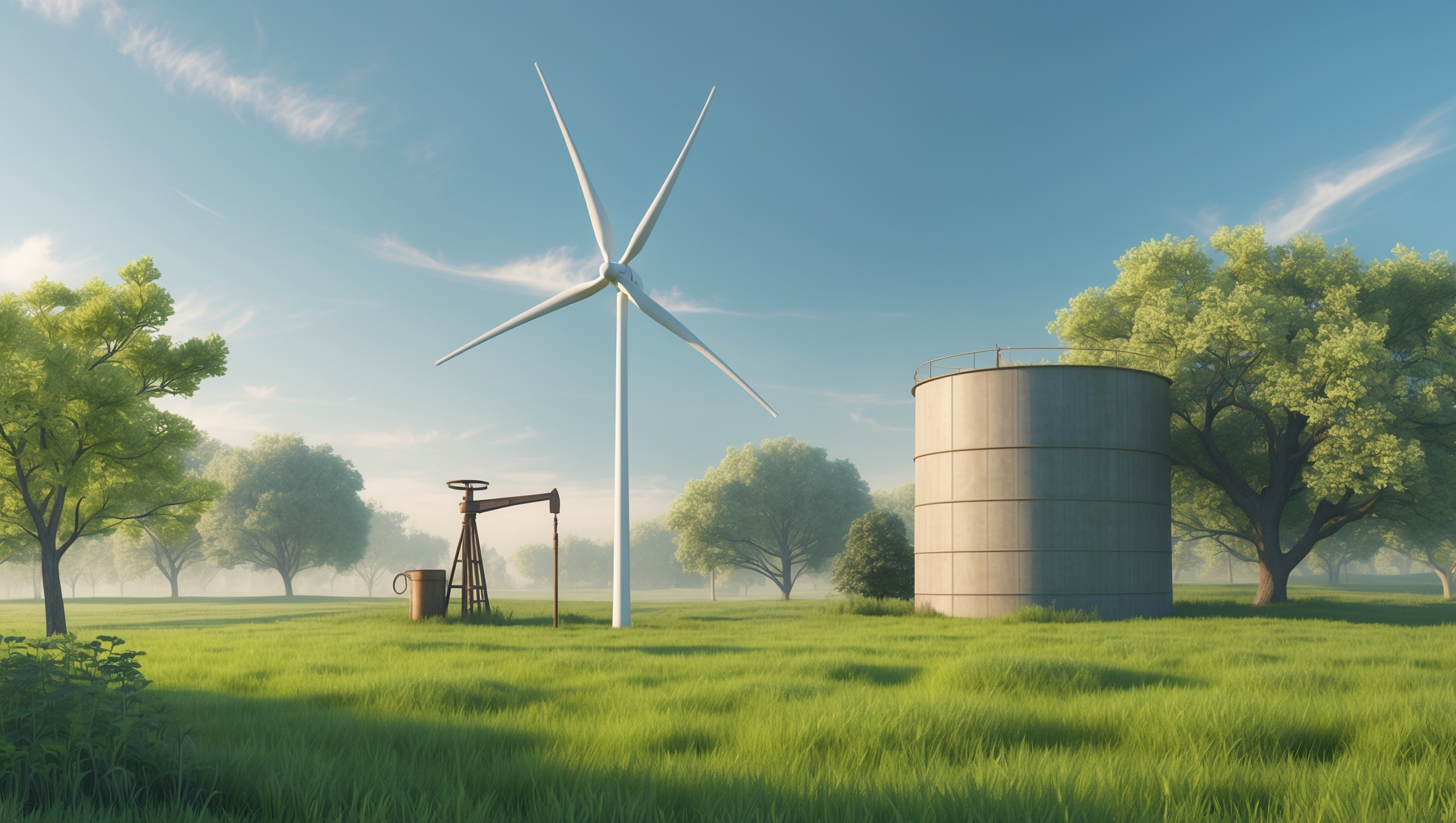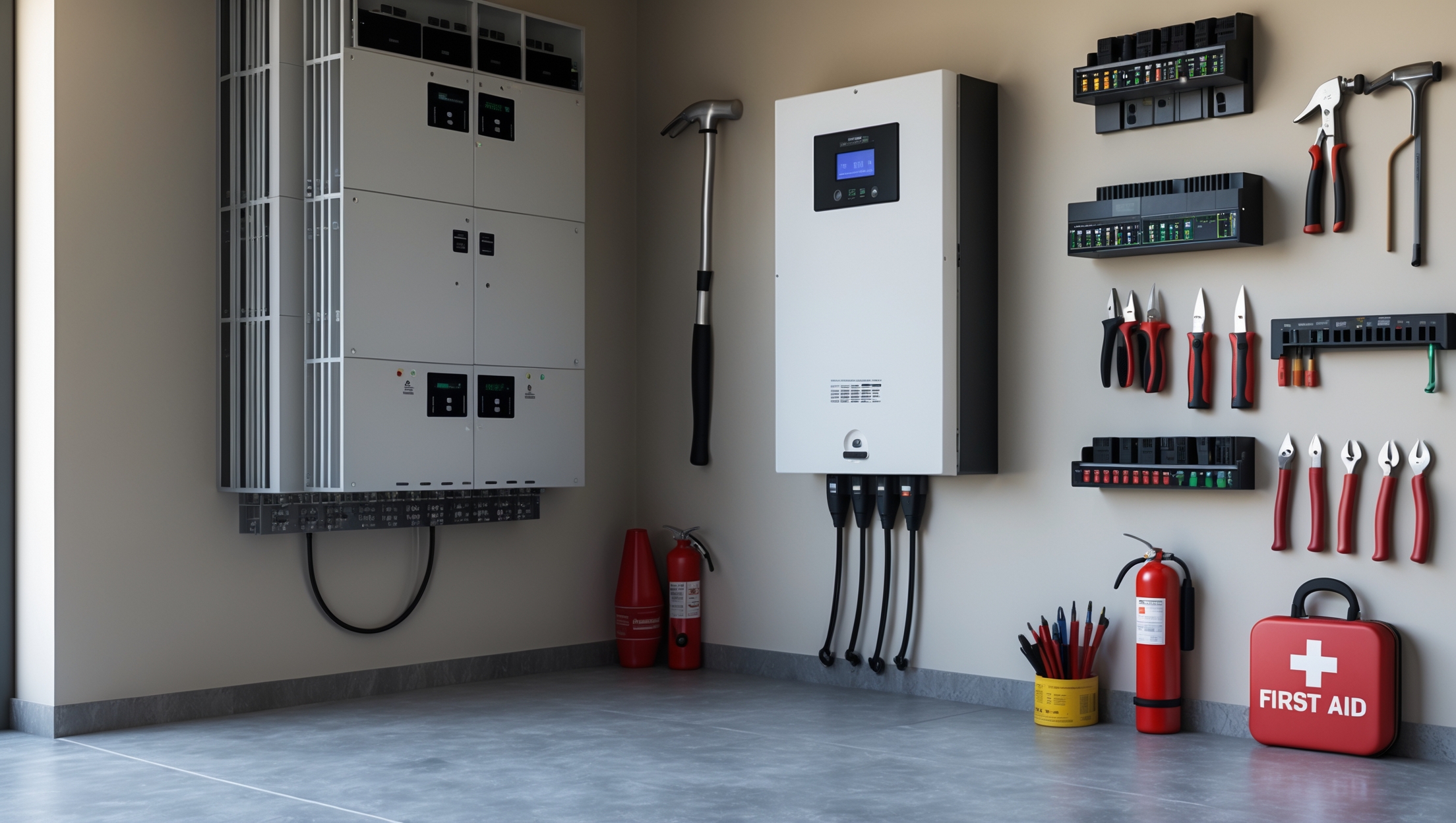Introduction
As the world transitions toward cleaner, more sustainable energy sources, homeowners are increasingly seeking ways to produce, store, and utilize renewable energy on-site. While solar and battery systems have become almost mainstream, the combination of small-scale wind power and hydrogen generation is still an emerging frontier—one that holds immense promise for energy independence, resilience, and environmental stewardship. A home wind-to-hydrogen system leverages wind turbines to generate electricity, which is then used to split water into hydrogen and oxygen via electrolysis. The produced hydrogen can be stored for later use—powering fuel cells, heating, or even transportation. This approach addresses the intermittency of wind by converting surplus energy into a storable, versatile fuel.
This comprehensive, step-by-step guide is designed for homeowners and sustainability enthusiasts ready to explore this innovative technology. We’ll cover the entire process: system design, equipment selection, permitting, setup, budgeting, safety, and ongoing maintenance. By the end, you’ll have a clear, actionable roadmap to harnessing the wind and storing its power as clean hydrogen—right in your own backyard.
Understanding Wind-to-Hydrogen: How the System Works
Key Components
- Small Wind Turbine: Converts kinetic energy from wind into electricity.
- Electrolyzer: Uses the generated electricity to split water into hydrogen and oxygen.
- Hydrogen Storage Tank: Safely stores the produced hydrogen gas.
- Power Management System: Controls, monitors, and optimizes the flow of electricity.
- Safety and Monitoring Devices: Includes hydrogen detectors, pressure relief valves, and system controllers.
System Flow Overview
When the wind blows, the turbine generates electricity, which powers the electrolyzer. Pure hydrogen is produced and stored in a high-pressure tank. When needed, the hydrogen can be used in a stationary fuel cell system to supply electricity and heat, or even as a fuel for hydrogen-powered vehicles.
Planning Your Home Wind-to-Hydrogen System
Step 1: Assess Your Site’s Wind Resources
Start by evaluating whether your property receives enough wind to justify a turbine. Use a wind resource map (such as those from the National Renewable Energy Laboratory) and, if possible, conduct a year-long site-specific wind speed measurement at the intended turbine height. Areas with average annual wind speeds of 5 m/s (11 mph) or higher are suitable for small wind systems.
Step 2: Determine Your Energy and Hydrogen Needs
- Estimate your average daily and peak electricity consumption (kilowatt-hours).
- Decide how much hydrogen you want to produce—just for backup, or to fully power certain appliances or vehicles?
- Factor in seasonal variations in wind and energy use.
Step 3: Check Local Regulations and Permitting Requirements
Contact your local zoning office and utility to determine what permits are required for wind turbines, hydrogen storage, and grid interconnection (if applicable). Some areas have strict height, setback, or noise regulations. Hydrogen storage, in particular, may be subject to stringent fire code requirements.
Budgeting and Cost Breakdown
Major Cost Categories
- Wind Turbine & Tower: $5,000–$15,000 for residential-scale systems (1–10 kW).
- Electrolyzer: $8,000–$20,000 depending on capacity and technology (PEM is more expensive but safer and more efficient for home use).
- Hydrogen Storage: $5,000–$12,000 for composite tanks (including safety hardware).
- Balance of System (controllers, wiring, inverters): $2,000–$5,000.
- Professional Installation (optional): $3,000–$10,000.
- Permits & Inspections: $500–$2,000.
- Maintenance Tools & Supplies: $300–$1,000 per year.
Potential Savings and Incentives
- Federal and state renewable energy tax credits may apply to wind turbines and hydrogen production equipment.
- Some utilities offer rebates for distributed renewable energy systems.
- Hydrogen can offset propane, natural gas, or gasoline costs, depending on your application.
Step-by-Step Setup Tutorial
Step 1: Preparing the Site
- Secure necessary permits and utility approvals.
- Choose a location for the wind turbine that is clear of obstructions, at least 30 feet above the nearest obstacle within 300 feet.
- Plan a safe, well-ventilated area for the electrolyzer and hydrogen storage—ideally in a detached shed or weatherproof outdoor enclosure.
Step 2: Installing the Wind Turbine
- Excavate and pour a reinforced concrete foundation for the tower (exact specs depend on turbine size and local soil conditions).
- Assemble and erect the tower, ensuring it is vertical and anchored according to manufacturer guidelines.
- Mount the wind turbine atop the tower and connect wiring to the control panel.
- Install lightning protection and grounding systems.
Step 3: Setting Up the Electrolyzer
- Position the electrolyzer on a level, non-combustible surface in a dry, ventilated enclosure.
- Connect the DC power input from the wind turbine’s charge controller or inverter (if using AC output).
- Install water supply lines (use deionized or distilled water for optimal performance).
- Ensure proper drainage for oxygen venting and water overflow.
Step 4: Hydrogen Storage Integration
- Select a certified high-pressure composite storage tank rated for at least 350 bar (5,000 psi) for home use.
- Position the tank in a secure, shaded, and well-ventilated location, away from ignition sources and direct sunlight.
- Install all required safety hardware: pressure relief valves, flashback arrestors, hydrogen detectors, and leak alarms.
- Connect the electrolyzer’s hydrogen output to the storage tank using high-pressure, hydrogen-compatible tubing and fittings (typically stainless steel).
- Test all connections with a hydrogen-specific leak detector before commissioning.
Step 5: Power Management and Monitoring
- Install a system controller to manage charging, hydrogen production, and storage levels.
- Set up remote monitoring (many systems offer Wi-Fi or app-based interfaces) to track wind generation, electrolyzer status, and hydrogen tank pressure.
- Integrate safety interlocks and emergency shutdown features.
Step 6: Commissioning and Initial Testing
- With all components installed, perform a low-power test run to check for leaks, proper operation, and correct monitoring readouts.
- Gradually bring the system up to full power while verifying hydrogen production and storage rates.
- Document all serial numbers, installation dates, and baseline performance metrics for future maintenance.
Safety Checklist: Protecting Your Home and Family
- Install hydrogen detectors near all storage and production equipment.
- Maintain clear signage indicating the presence of pressurized hydrogen.
- Ensure all electrical connections are protected from moisture and rodents.
- Never store hydrogen indoors or near living spaces.
- Test all pressure relief valves and alarms monthly.
- Train all household members on emergency shutdown procedures and evacuation routes.
- Schedule annual inspections by a certified hydrogen system technician.
- Keep a Class B fire extinguisher accessible, but remember hydrogen fires are invisible—evacuate and call emergency services if a leak is suspected.
Maintenance Best Practices
Wind Turbine
- Visually inspect blades and tower every 6 months for signs of wear, corrosion, or bird strikes.
- Lubricate moving parts and check for tightness of bolts and guy wires.
- Clean turbine blades as needed to maintain efficiency.
Electrolyzer
- Check water supply quality and refill with deionized water as needed.
- Change filters (if equipped) according to manufacturer schedule.
- Monitor for scale buildup or reduced hydrogen output.
Hydrogen Storage
- Inspect tanks monthly for signs of wear, corrosion, or mechanical damage.
- Test leak detection equipment regularly.
- Replace storage tanks according to their certified service life (typically 10–15 years).
System Electronics
- Update firmware on monitoring/control systems as recommended.
- Check cables and connectors for signs of weathering or rodent damage.
- Document all maintenance actions in a dedicated logbook.
Using Your Hydrogen: Practical Applications
- Backup Power: Run a stationary hydrogen fuel cell to supply clean electricity during grid outages.
- Home Heating: Blend hydrogen (up to 20%) with natural gas for compatible boilers and appliances.
- Transportation: Refuel a hydrogen fuel cell vehicle if you own one or have access to conversion kits.
- Outdoor Applications: Use in hydrogen-powered generators, BBQ grills, or camping equipment (with proper adapters).
Always check local codes before connecting hydrogen to any existing appliances or infrastructure.
Common Pitfalls and How to Avoid Them
- Underestimating the importance of wind resource assessment—installing in a low-wind area leads to disappointing hydrogen yields.
- Choosing the wrong electrolyzer size—oversizing wastes money, undersizing limits system usefulness.
- Skimping on safety features—hydrogen is safe when handled with care, but shortcuts can be dangerous.
- Ignoring maintenance—neglected systems lose efficiency and can become hazardous.
- Failing to plan for storage expansion—if your energy needs grow, upgrading tank capacity can be costly if not planned up front.
Conclusion
Installing a home wind-to-hydrogen system is a bold step toward true energy independence and carbon-free living. While the technology is more complex and capital-intensive than traditional solar or wind-battery setups, it offers unique advantages: hydrogen’s flexibility as a fuel, its ability to store large amounts of energy for weeks or months, and its potential to decarbonize both electricity and transportation. With careful planning, diligent maintenance, and a commitment to safety, homeowners can successfully harness the power of the wind and transform it into clean, storable hydrogen—turning their property into a showcase for the future of sustainable living.
This journey requires patience, technical learning, and sometimes professional guidance. However, the rewards—reduced fossil fuel reliance, lower emissions, and the satisfaction of mastering an advanced renewable energy system—are well worth the investment. As costs decline and technology matures, home wind-to-hydrogen systems will become more accessible. By adopting this approach now, you not only future-proof your home but also inspire your community to think bigger about sustainability. Remember: every kilowatt-hour of clean energy and every kilogram of hydrogen produced at home is a step toward a greener, more resilient world. Whether you’re powering your lights, heating your home, or fueling your vehicle, you’re part of an exciting and impactful movement. Stay informed, stay safe, and enjoy the journey into tomorrow’s energy landscape.




